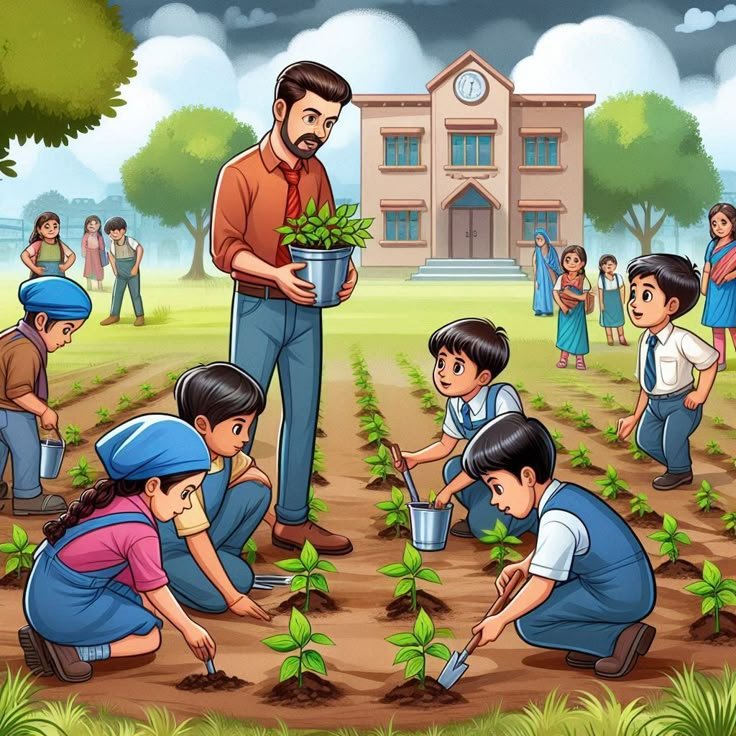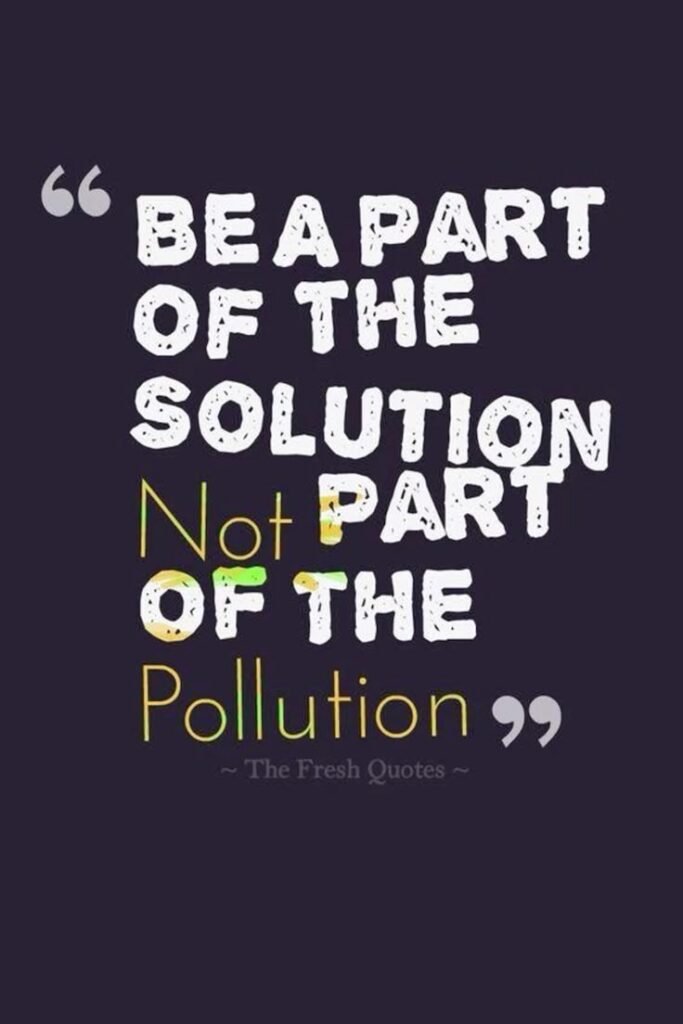
Introduction
A Personal Journey in Planting a Forest
Embarking on the journey of planting a forest is not just an act of environmental stewardship; it is a deeply personal experience that intertwines passion, purpose, and perseverance. My own journey began with a simple desire to make a difference in my local community and the planet at large. As I dug my hands into the soil, I discovered the profound connection between nature and humanity. Each sapling I planted represented hope, resilience, and the potential for change. This blog aims to share that transformative power of planting forests, illustrating how this practice can lead to significant environmental and social change.

The Importance of Planting a Forest to Change the World
The phrase “planting a forest to change the world” encapsulates a powerful vision for our future. Forests play a crucial role in combating climate change, enhancing biodiversity, and improving air quality. According to the Food and Agriculture Organization (FAO), forests cover about 31% of the Earth’s land area and are home to 80% of terrestrial biodiversity. By engaging in tree planting initiatives, we can directly contribute to mitigating the impact of climate change and fostering a healthier planet. The act of planting trees is not merely an environmental endeavor; it is a call to action for individuals and communities to unite in the face of global challenges.
Key Themes: Environmental Impact, Activism, and Sustainability
The impact of planting trees extends far beyond the immediate benefits of increased greenery. Trees absorb carbon dioxide, release oxygen, and provide habitats for countless species. This environmental activism is essential in our fight against climate change. Moreover, sustainable living practices, such as using native species and promoting biodiversity, ensure that our efforts are not only effective but also responsible.
Community tree planting initiatives serve as a catalyst for change, bringing people together to work towards a common goal. These events foster a sense of belonging and shared responsibility, empowering individuals to take ownership of their environment. For instance, in many urban areas, community tree planting has led to improved air quality and reduced urban heat islands, showcasing the tangible benefits of collective action.
The Benefits of Reforestation
Reforestation is a vital component of our global strategy to restore ecosystems and combat deforestation. The benefits of reforestation are manifold, including enhanced soil health, increased water retention, and improved wildlife habitats. By planting a forest, we not only contribute to the restoration of natural landscapes but also create a legacy for future generations. The act of nurturing a forest can inspire others to join the movement, amplifying the impact of our efforts.

In summary, the journey of planting a forest is a powerful testament to the potential for change. Through environmental activism, sustainable practices, community involvement, and reforestation, we can collectively work towards a healthier, more sustainable world.
The Impact of Planting Trees
Trees and Carbon Sequestration
One of the most significant contributions of trees to our environment is their ability to sequester carbon. Through the process of photosynthesis, trees absorb carbon dioxide (CO2) from the atmosphere and store it in their biomass. According to the U.S. Forest Service, a mature tree can absorb approximately 48 pounds of CO2 annually. This process is crucial in combating climate change, as it helps to reduce the overall concentration of greenhouse gases in the atmosphere. When we engage in community tree planting initiatives, we are not just beautifying our surroundings; we are actively participating in a global effort to mitigate climate change and its impacts.
Biodiversity and Wildlife Habitats
Planting trees also plays a vital role in enhancing biodiversity and providing habitats for wildlife. Forests are home to over 80% of terrestrial species, including birds, mammals, insects, and plants. By creating new forests or restoring degraded ones, we can support these ecosystems and promote a healthier environment. For instance, I recall participating in a community tree planting event where we planted native species that attract local pollinators. The immediate increase in bird activity and the buzzing of bees around the newly planted trees were a testament to the positive impact of our efforts. This experience highlighted how planting a forest can change the world by fostering a thriving ecosystem.
Soil Conservation and Water Cycle Regulation
Trees are essential for soil conservation and the regulation of the water cycle. Their root systems help to anchor the soil, preventing erosion and maintaining soil health. Additionally, trees play a critical role in the water cycle by facilitating groundwater recharge and reducing surface runoff. A study by the World Resources Institute found that reforestation can increase water availability in regions suffering from drought. In my own experience, I have seen how planting trees along riverbanks not only stabilizes the soil but also improves water quality by filtering pollutants. This dual benefit underscores the importance of sustainable living practices that prioritize tree planting.
Personal Experiences with Tree Planting
My journey into environmental activism began with a simple act of planting trees in my local community. I remember the first time I participated in a community tree planting event; the sense of camaraderie among volunteers was palpable. We shared stories, laughter, and a common goal of making a difference. Each sapling we planted represented hope for a greener future. Over the years, I have witnessed the transformation of barren lands into lush green spaces, serving as a reminder of the profound impact of planting trees. These personal anecdotes reinforce the idea that through community tree planting, we can collectively contribute to the benefits of reforestation and create lasting change.

Environmental Activism
Definition and Importance of Environmental Activism
Environmental activism refers to the efforts made by individuals and groups to protect the natural environment from degradation and to promote sustainable practices. This form of activism is crucial in addressing pressing issues such as climate change, deforestation, and pollution. By raising awareness and advocating for policy changes, environmental activists play a vital role in fostering a more sustainable future. The importance of environmental activism cannot be overstated; it empowers communities to take action, influences governmental policies, and encourages individuals to adopt sustainable living practices.
How Planting a Forest Aligns with Activism Efforts
One of the most impactful ways to engage in environmental activism is through initiatives like planting a forest to change the world. This practice not only combats deforestation but also contributes to biodiversity, improves air quality, and mitigates climate change. Trees act as carbon sinks, absorbing CO2 from the atmosphere and helping to regulate the climate. Moreover, community tree planting initiatives foster a sense of ownership and responsibility among participants, encouraging them to become lifelong advocates for environmental stewardship.
Examples of Successful Activism Campaigns Focused on Reforestation
Numerous successful campaigns have demonstrated the power of reforestation as a form of environmental activism. For instance, the “One Tree Planted” initiative has gained global recognition for its efforts to plant trees in various regions, including areas affected by wildfires and deforestation. Since its inception, the organization has planted millions of trees, engaging communities and raising awareness about the impact of planting trees on local ecosystems. Another notable example is the “Trillion Tree Campaign,” which aims to plant one trillion trees worldwide by 2030. This ambitious project highlights the collective power of individuals and organizations working together to restore forests and combat climate change.
Personal Reflections on Involvement in Activism
My journey into environmental activism began with a community tree planting event that opened my eyes to the profound impact of planting trees. Witnessing the enthusiasm of volunteers and the immediate benefits of our efforts—such as improved local air quality and enhanced community spirit—was transformative. Engaging in these activities not only deepened my understanding of the benefits of reforestation but also connected me with like-minded individuals who share a passion for sustainable living practices. Each tree planted represents a step toward healing our planet, and being part of this movement has instilled a sense of purpose in my life. Through activism, I have learned that collective action can lead to significant environmental and social change, reinforcing the idea that every small effort counts in the fight for a healthier planet.
Sustainable Living Practices
Overview of Sustainable Living and Its Relevance to Tree Planting
Sustainable living is a lifestyle that aims to reduce an individual’s or society’s use of the Earth’s natural resources. It emphasizes the importance of making choices that are environmentally friendly, socially responsible, and economically viable. One of the most impactful ways to embrace sustainable living is through practices that support tree planting and forest conservation. The act of planting a forest to change the world is not just about adding greenery; it’s about fostering ecosystems, enhancing biodiversity, and combating climate change. By integrating sustainable living practices into our daily lives, we can contribute to the larger goal of environmental activism and promote the benefits of reforestation.
Practices That Support Forest Conservation and Sustainable Forestry
Engaging in sustainable forestry practices is crucial for maintaining healthy forests. This includes methods such as selective logging, which minimizes damage to surrounding trees and promotes natural regeneration. Additionally, supporting community tree planting initiatives can significantly enhance local ecosystems. For instance, organizations like the Arbor Day Foundation encourage individuals and communities to plant trees, which not only sequester carbon but also provide habitats for wildlife. By participating in these initiatives, we can directly contribute to the impact of planting trees on our environment.

Moreover, choosing products that are certified by organizations like the Forest Stewardship Council (FSC) ensures that the wood and paper we use come from sustainably managed forests. This conscious consumerism helps reduce deforestation and promotes responsible forestry practices.
Personal Sustainable Practices Adopted During the Journey
On my journey towards sustainable living, I have adopted several practices that align with the principles of environmental stewardship. For example, I have transitioned to a plant-based diet, which significantly reduces my carbon footprint and lessens the demand for land that could otherwise be used for reforestation. Additionally, I have made a habit of using reusable bags, bottles, and containers, which minimizes plastic waste and encourages a culture of sustainability.
Participating in local community tree planting events has also been a transformative experience. Not only do these events foster a sense of community, but they also provide an opportunity to educate others about the importance of trees in our ecosystem. Each tree planted is a step towards restoring balance in our environment.
Connection Between Individual Actions and Global Impact
The connection between individual actions and global impact cannot be overstated. Each small step we take towards sustainable living contributes to a larger movement that can lead to significant environmental change. For instance, the cumulative effect of millions of individuals adopting sustainable practices can lead to a substantial reduction in carbon emissions and a marked improvement in air quality.
Moreover, when we engage in community tree planting, we are not just planting trees; we are planting hope for future generations. The benefits of reforestation extend beyond environmental restoration; they also enhance community resilience and foster social cohesion. By understanding that our individual actions can collectively lead to a healthier planet, we empower ourselves to make choices that align with the vision of a sustainable future.
Community Tree Planting
Importance of Community Involvement in Tree Planting Initiatives
Community involvement is crucial in tree planting initiatives, as it fosters a sense of ownership and responsibility among local residents. When individuals come together to plant trees, they not only contribute to the environment but also strengthen community bonds. The impact of planting trees extends beyond mere aesthetics; it enhances air quality, combats climate change, and provides habitats for wildlife. Engaging the community in these efforts ensures that the trees planted are cared for and nurtured, leading to a higher survival rate and long-term benefits.

Examples of Community-Led Tree Planting Projects
Numerous successful community-led tree planting projects illustrate the power of collective action. For instance, the “One Tree Planted” initiative has mobilized communities across the globe to plant millions of trees. In urban areas, local organizations often host events where residents can come together to plant trees in parks or along streets. In 2020, a community in Los Angeles organized a tree planting day that resulted in over 500 new trees being planted in a single afternoon. Such projects not only beautify neighborhoods but also serve as a reminder of the positive impact of environmental activism.
Benefits of Engaging Local Communities in Reforestation Efforts
Engaging local communities in reforestation efforts yields numerous benefits. Firstly, it promotes sustainable living practices by educating participants about the importance of trees in combating climate change and preserving biodiversity. Secondly, community tree planting initiatives can improve mental health and well-being, as studies have shown that spending time in nature reduces stress and enhances mood. Additionally, these projects can create job opportunities in areas such as landscaping and environmental education, contributing to local economies. The benefits of reforestation are multifaceted, encompassing environmental, social, and economic aspects that enrich communities.
Personal Experiences with Community Tree Planting Events
Reflecting on my own experiences with community tree planting events, I recall a particularly impactful day spent in a local park. Volunteers of all ages gathered, armed with shovels and saplings, ready to make a difference. As we dug holes and planted trees, conversations flowed, and friendships blossomed. The sense of camaraderie was palpable, and it was inspiring to witness how a simple act of planting a forest could unite people for a common cause. The event not only resulted in a greener park but also instilled a deeper appreciation for the environment among participants. Such experiences highlight the transformative power of community tree planting, reinforcing the idea that together, we can change the world, one tree at a time.
Benefits of Reforestation
Reforestation, or the act of planting a forest to change the world, offers a multitude of ecological and social benefits that extend far beyond the mere act of planting trees. This practice not only helps restore ecosystems but also fosters community engagement and promotes sustainable living practices. The impact of planting trees can be profound, leading to healthier environments and stronger communities.

Economic Advantages
One of the most compelling reasons to engage in reforestation is the economic benefits it brings. Job creation is a significant advantage; tree planting initiatives often require a workforce for planting, maintenance, and monitoring. According to the World Resources Institute, reforestation can create up to 1.1 million jobs globally by 2030.
Moreover, reforested areas can boost local tourism. Forests attract visitors for hiking, birdwatching, and eco-tourism, which can provide a sustainable income for local communities. For instance, Costa Rica has successfully leveraged its reforestation efforts to become a leading eco-tourism destination, showcasing the economic potential of healthy forests. Additionally, sustainable resources such as timber and non-timber forest products can be harvested responsibly, ensuring that communities benefit economically while preserving the environment.
Health Benefits
The health benefits of reforestation are equally significant. Improved air quality is one of the most immediate advantages; trees act as natural air filters, absorbing pollutants and releasing oxygen. A study by the U.S. Forest Service found that urban trees can reduce air pollution by up to 30%, leading to healthier populations.
Furthermore, the mental well-being of individuals is enhanced by green spaces. Research indicates that spending time in nature can reduce stress, anxiety, and depression. Community tree planting initiatives not only beautify neighborhoods but also create spaces for relaxation and social interaction, fostering a sense of belonging and community pride.
Personal Insights on Long-Term Benefits
Having witnessed the long-term benefits of reforestation firsthand, I can attest to the transformative power of this practice. In my community, a local initiative to plant trees in urban areas has led to a noticeable increase in biodiversity. Birds and other wildlife have returned, creating a vibrant ecosystem that was once lost.
Moreover, the community has come together in ways I never imagined. Families, schools, and local organizations have united for community tree planting events, fostering a spirit of collaboration and environmental stewardship. The long-term benefits of these efforts are evident not only in the flourishing trees but also in the strengthened community bonds and shared commitment to sustainability.

In summary, the benefits of reforestation are vast and varied, encompassing economic, health, and social dimensions. By engaging in planting a forest to change the world, we can create a legacy of environmental stewardship and community resilience that will endure for generations to come.
Conclusion
Recap of the Transformative Power of Planting a Forest
Planting a forest is not merely an act of placing seeds in the ground; it is a profound commitment to nurturing life and fostering change. The impact of planting trees extends far beyond the immediate environment, influencing climate regulation, biodiversity, and even local economies. Each tree planted contributes to carbon sequestration, helping to mitigate climate change while simultaneously providing habitats for countless species. This transformative power is evident in various reforestation projects worldwide, where communities have witnessed revitalized ecosystems and improved air quality. The act of planting a forest can indeed change the world, one sapling at a time.
Reflection on the Personal Journey and Its Broader Implications
My personal journey into the world of environmental activism began with a simple tree-planting event in my local community. What started as a weekend volunteer opportunity quickly evolved into a passion for sustainable living practices and a deeper understanding of our interconnectedness with nature. Through this experience, I learned that community tree planting not only enhances local landscapes but also fosters a sense of belonging and collective responsibility. The broader implications of this journey are significant; as individuals engage in planting forests, they inspire others to take action, creating a ripple effect that can lead to widespread environmental stewardship.
For instance, a small group of volunteers can spark interest in local schools, leading to educational programs about the benefits of reforestation. This grassroots movement can ultimately influence policy changes at higher levels, demonstrating that individual actions can culminate in substantial societal shifts.
Final Thoughts on the Importance of Collective Action in Environmental Stewardship
The importance of collective action in environmental stewardship cannot be overstated. When communities come together to plant a forest, they are not just contributing to the environment; they are also building social bonds and fostering a culture of sustainability. The benefits of reforestation are manifold, including improved soil health, enhanced water retention, and increased biodiversity. However, these benefits can only be fully realized when individuals unite in their efforts.
As we reflect on the transformative power of planting a forest, it becomes clear that our collective actions can lead to significant environmental and social change. Whether through organized community tree planting events or individual efforts in our backyards, every contribution counts. By embracing the ethos of environmental activism and encouraging sustainable living practices, we can create a legacy of stewardship that will benefit future generations. Together, we have the power to change the world, one forest at a time.

Our Planet is begging from us; its once lush woodlands are vanishing, its seas are drowning in plastic, and its atmosphere is tainted with the murk of pollution. The splendor we once took for granted is swiftly disappearing, and if we don’t act now, we might lose it forever. The moment to take action is now. We cannot afford to remain passive while the cherished Earth is on the verge of irreversible harm. The Earth is not merely our residence—it shelters every living being, and its decline will influence future generations. We must unite to protect it before it’s too late. Let’s rise and advocate for the planet, its future, and all the lives it nurtures.
At Eco Beginner, we are committed to making this battle a bit easier and significantly more effective. We provide a diverse selection of eco-conscious, print-on-demand products, ranging from cozy cushions and trendy t-shirts to delightful mugs, wall art, lockets, puzzles, and much more. Every product we offer is crafted to facilitate a more sustainable lifestyle while still infusing joy and beauty into your everyday routine. When you choose to buy from us, you are making a deliberate decision to support a greener tomorrow.
Not only will you be acquiring distinctive, high-quality items, but you will also support a brand that genuinely cares about the environment. All of our products are designed with sustainability in focus, ensuring that every purchase you make aids in preserving the planet for future generations.
Every step you take with us brings you closer to a brighter, more sustainable future. In addition to our eco-friendly offerings, we are thrilled to introduce our new book on sustainable living. This book is an all-encompassing guide, brimming with practical insights, heartfelt counsel, and motivating tales to help you adopt a more eco-friendly lifestyle. By supporting us, you’re not just acquiring a product—you’re also endorsing a movement aimed at change.
Moreover, 50% of our profits are donated to charitable organizations, aiding those in distress and promoting environmental initiatives that can help heal the planet. Everything we produce is eco-friendly, and each purchase you make contributes to a lasting change in the world around us.
When you opt for Eco Beginner, you’re selecting more than just a product. You’re becoming part of a community that’s dedicated to rescuing the Earth, one mindful decision at a time. Together, we can create an impact—let’s unite and embody the change we urgently need. Thank you for joining us on this journey.
And even if you can’t buy anything today, you can still assist us in spreading the word! Just click on the ads on our site to support our cause. Every small action adds up, and your participation helps us reach a wider audience and create an even greater impact. Thank you for your on going support!



